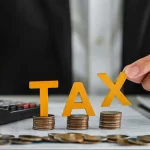Singapore, known for its thriving economy and high standard of living, has been a long topic of discussion when it comes to labor policies. One aspect that raises questions is the concept of minimum wage in Singapore per hour. Unlike many other countries Singapore has taken a unique approach to ensuring fair compensation for workers. In this blog post we’ll explore the intricacies of Singapore’s wage policies, recent developments and what it means for employers and employees.
The Progressive Wage Model: An Alternative to Singapore’s Minimum Wage
Contrary to popular belief, Singapore does not have a nationwide minimum wage system. Instead, the country has implemented the Progressive Wage Model (PWM), introduced in 2012. This model aims to increase wages of lower-wage workers through skills upgrading and productivity improvements. The PWM sets out a wage ladder for specific sectors, ensuring that workers in these industries receive fair compensation based on their skills, productivity and job responsibilities. Initially, the PWM covered three sectors: cleaning, security and landscaping.
Over the years, the model has expanded to include more sectors and occupations, reflecting the government’s commitment to improving wages across different industries.
How the PWM works is that the employers are required to pay a base wage specified for their job role and skill level. As workers upgrade their skills and take on higher responsibilities, they progress up the wage ladder, earning higher salaries. The wage levels are regularly reviewed and adjusted to ensure they remain relevant and fair. This approach ensures continuous learning and development among workers while providing a clear progressive path.
Minimum Wage in Singapore Per Hour: Recent Changes 2024-25
- Expansion of PWM Coverage: The government has announced plans to extend the PWM to more sectors, including food services and retail. This expansion aims to benefit a larger pool of lower-wage workers across the island. According to MOM Employment Practices, as of 2023, PWM covers about 94,000 workers across the cleaning, security, and landscape sectors. By 2028, PWM is expected to cover about 200,000 lower-wage workers.
- Introduction of Local Qualifying Salary (LQS): From September 1, 2024 a new Local Qualifying Salary will be implemented. This measure requires employers to pay at least S$1,500 per month to all local full-time employees and S$9 per hour to all local part-time workers. This move is designed to complement PWM and ensure a basic level of income for all local workers.
- Enhanced Workfare Income Supplement (WIS): The WIS scheme, which provides cash payouts and CPF top-ups to lower-wage Singaporean workers, has been enhanced. The income ceiling for eligibility has been raised, the maximum annual payout has been increased to S$4,000 for workers aged 60 and above.
- Increased Wage Floors: The wage floors for existing PWM sectors have been raised. For example, the base wage for security officers has been increased to S$1,650 per month, while cleaners now have a minimum wage of S$1,570 per month.
- Progressive Wage Mark: The government has introduced the Progressive Wage Mark, a scheme for employers who pay progressive wages to lower-wage workers. This mark aims to recognize and incentivize companies that go beyond the minimum PWM requirements.
Minimum Wage in Singapore Per Hour: Impact on Employers and Workers
The recent updates to Singapore’s wage policies have several implications.
For Workers:
- Increased income security for lower-wage employees
- More opportunities for skills upgrading and career progression
- Improved work conditions and job satisfaction
For Employers:
- Higher labor costs, particularly in sectors newly covered by the PWM
- Incentives to invest in employee training and productivity improvements
- Potential for increased employee retention and reduced turnover
Must Read: Minimum Wage Singapore: A Guide for Employers and Employees 2024
Minimum Wage in Singapore Per Hour: Challenges and Criticisms
While Singapore’s approach to wage policy has been largely successful, it is not without its critics. Some argue that the PWM does not cover enough sectors and that the wage increases are not substantial enough to keep pace with the rising cost of living in Singapore.
Others point out that the sector-specific approach may create wage disparities between industries and potentially lead to market distortions. There are also concerns about the impact on small and medium-sized enterprises (SMEs) that may struggle to absorb the increased labor costs.
Minimum Wage in Singapore Per Hour: The Future of Wages in Singapore
As Singapore continues to evolve its wage policies, it’s clear that the government is committed to finding a balance between ensuring fair compensation for workers and maintaining economic competitiveness. The ongoing expansion of the PWM and the introduction of measures like the Local Qualifying Salary demonstrate a proactive approach to addressing wage issues.
Looking ahead, we can expect to see:
- Further refinements to the PWM and its coverage
- Increased focus on skills development and productivity enhancement
- More initiatives to support businesses in implementing progressive wage practices






